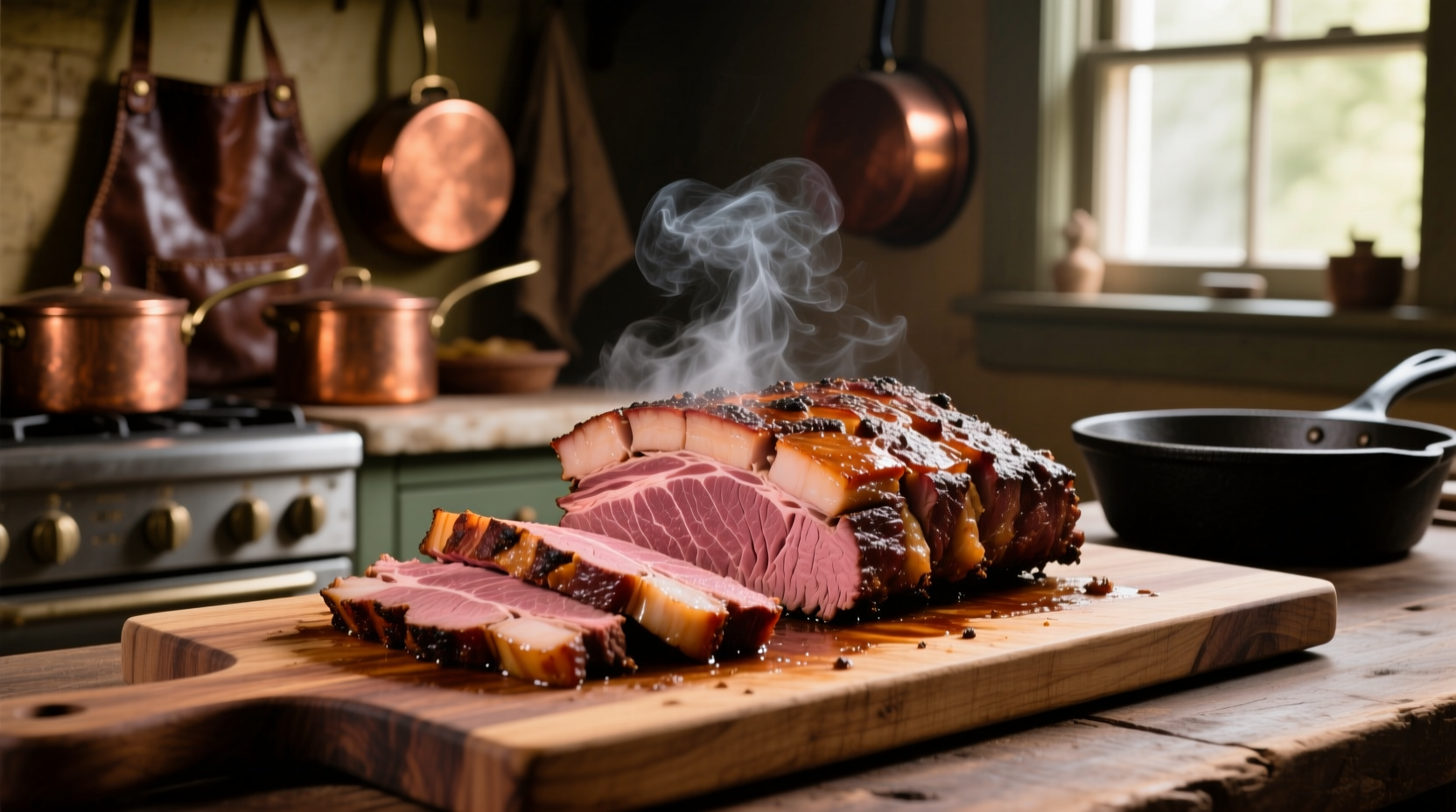Why Brisket Cooking Time Isn't One-Size-Fits-All
When planning your brisket cook, understanding the variables that affect timing is crucial for success. Unlike most meats, brisket’s high collagen content requires slow, low-temperature cooking to transform tough fibers into tender, flavorful results. This isn't a set-it-and-forget-it process—it demands attention to multiple factors that influence the final timeline.
Your Brisket Cooking Timeline Roadmap
Before you fire up your smoker, map out your complete timeline. Professional pitmasters emphasize that brisket cooking involves three distinct phases: preparation, active cooking, and resting. Many beginners underestimate the total time commitment, leading to last-minute stress when guests arrive and the meat isn't ready.
| Brisket Weight | Smoking Time (225°F) | Total Timeline | Critical Milestones |
|---|---|---|---|
| 8-10 lbs | 10-12 hours | 14-16 hours | 4-5 hours: Wrap phase begins |
| 10-12 lbs | 12-14 hours | 16-18 hours | 6-7 hours: Probe tender stage |
| 12-15 lbs | 14-16 hours | 18-20 hours | 8-9 hours: Internal temp 195-205°F |
Preparation: Setting the Stage for Success
Your brisket journey begins long before it hits the smoker. Proper preparation prevents timing disasters:
- Thawing time: Allow 24 hours of refrigerator thawing per 5 pounds of meat—never rush this process at room temperature
- Trimming efficiency: Allocate 30-45 minutes for proper fat cap trimming (1/4 inch thickness)
- Dry brine window: For optimal flavor penetration, apply salt 12-24 hours before cooking
- Temperature equalization: Let trimmed brisket sit at room temperature for 1-2 hours before smoking
According to the USDA Food Safety and Inspection Service, maintaining proper temperatures during preparation prevents bacterial growth that could compromise food safety (USDA FSIS guidelines).
Active Cooking: Managing the Critical Variables
During the cooking phase, these factors dramatically impact your timeline:
The Stall: Your Biggest Time Variable
Between 150-170°F, brisket experiences the “stall”—a temperature plateau where evaporative cooling slows cooking for 2-6 hours. This natural phenomenon explains why cooking time isn't strictly weight-dependent. Professional pitmasters at the Kansas City Barbeque Society note that stalls vary based on humidity, meat thickness, and smoker airflow.
Temperature Matters More Than Clock Watching
While many search for “how long to smoke brisket at 225,” temperature consistency proves more critical than strict timing. The Texas A&M Meat Science Department confirms that maintaining steady temperatures between 225-250°F yields optimal collagen breakdown without drying the meat (Texas A&M Meat Science).

The Resting Phase: Don't Skip This Time Investment
Many home cooks mistakenly believe cooking ends when the thermometer hits 203°F. In reality, the 2-4 hour resting period is when magic happens:
- Liquid redistribution creates juicier slices
- Residual heat continues tenderizing collagen
- Flavors fully develop during this carryover cooking
Wrap your brisket in butcher paper or aluminum foil, then place in an empty cooler with towels for insulation. This technique, validated by competitive barbecue teams, maintains safe temperatures while allowing proper resting without overcooking.
Troubleshooting Common Timing Issues
When your brisket isn't progressing as expected:
Problem: Cooking too slowly
Solution: Check your smoker temperature consistency. Fluctuations below 200°F significantly extend cooking time. Add preheated charcoal or adjust vents before increasing temperature.
Problem: Cooking faster than expected
Solution: If your brisket reaches 195°F well before serving time, lower smoker temperature to 200°F and extend the resting phase. Never remove brisket early—it needs time for collagen conversion.
Problem: Uneven cooking
Solution: Rotate the brisket periodically, placing the thicker end toward heat sources. The thicker point section typically requires 25% more cooking time than the flat section.
Modern Brisket Timeline Evolution
Brisket cooking methods have evolved significantly:
- 1950s-1970s: Traditional pit cooking took 18-24 hours with inconsistent results
- 1980s-1990s: Introduction of water pans stabilized temperatures, reducing average time to 14-18 hours
- 2000s-present: Digital thermometers and insulated smokers narrowed the window to 10-14 hours with greater consistency
This progression demonstrates how technology has made brisket more accessible while preserving traditional flavor development principles.
When to Adjust Your Timeline Expectations
Certain conditions require timeline adjustments:
- Cold weather: Add 1-2 hours to total cooking time when ambient temperatures drop below 40°F
- Humid conditions: May extend the stall phase by 1-3 hours
- Thick fat cap: Adds 15-30 minutes per pound to cooking duration
- Wrapped vs. unwrapped: Butcher paper wrapping typically reduces total time by 1-2 hours
Final Timeline Checklist
Before starting, verify you have adequate time for:
- Preparation (4-24 hours depending on brining method)
- Active cooking (1.5 hours per pound at 225°F)
- Mandatory resting (minimum 2 hours)
Remember: Brisket rewards patience. Rushing the process sacrifices texture and flavor development that cannot be recovered. When planning your next cook, build in a 2-hour buffer beyond your calculated timeline to accommodate natural variations.











 浙公网安备
33010002000092号
浙公网安备
33010002000092号 浙B2-20120091-4
浙B2-20120091-4